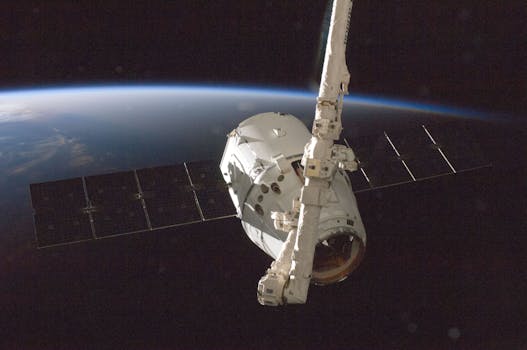
LEO satellites are at the forefront of a revolution in global connectivity, providing high-speed, low-latency internet access to even the most remote and underserved regions. With the increasing demand for fast and reliable connectivity, LEO satellites have become a crucial component of modern telecommunications infrastructure. In this article, we will explore the world of LEO satellites, their benefits, and how they are transforming the way we communicate and access information.
LEO satellites operate in a low Earth orbit, typically at an altitude of around 160 to 2,000 kilometers. This proximity to the Earth’s surface enables them to provide faster and more reliable connections compared to traditional geostationary satellites, which orbit at much higher altitudes. The lower latency and higher speeds offered by LEO satellites make them ideal for real-time applications such as video conferencing, online gaming, and virtual reality.
The use of LEO satellites is not limited to consumer applications. They are also being used by governments, businesses, and organizations to provide critical communications infrastructure, such as emergency response systems, remote sensing, and earth observation. The versatility and reliability of LEO satellites make them an attractive option for a wide range of industries and applications.
One of the key benefits of LEO satellites is their ability to provide global coverage, including in areas where traditional telecommunications infrastructure is limited or non-existent. This makes them an ideal solution for remote or underserved communities, where access to reliable and fast internet is often a challenge. By providing access to information and communication services, LEO satellites can help bridge the digital divide and promote economic development in these regions.
In addition to their technical benefits, LEO satellites are also more cost-effective than traditional satellite systems. The lower launch costs and shorter development timelines associated with LEO satellites make them a more attractive option for companies and organizations looking to establish a presence in space. This has led to a proliferation of LEO satellite constellations, with multiple companies and organizations launching their own networks of satellites.
However, the increasing number of LEO satellites in orbit also raises concerns about space debris and the potential for collisions. As the number of satellites in orbit continues to grow, there is a need for more effective debris mitigation and removal strategies to ensure the long-term sustainability of space activities. Regulatory frameworks and industry standards are being developed to address these concerns and ensure that the benefits of LEO satellites are realized while minimizing their environmental impact.
WordPress, as a popular content management system, can play a crucial role in promoting the adoption and development of LEO satellites. By providing a platform for companies and organizations to share information and showcase their services, WordPress can help raise awareness about the benefits of LEO satellites and their potential applications. Additionally, WordPress can be used to develop custom solutions for LEO satellite operators, such as satellite tracking and monitoring systems, to help them manage their networks and provide better services to their customers.
In conclusion, LEO satellites are revolutionizing the way we communicate and access information, providing faster and more reliable connections to even the most remote and underserved regions. With their technical benefits, cost-effectiveness, and global coverage, LEO satellites are an attractive option for a wide range of industries and applications. As the adoption and development of LEO satellites continue to grow, WordPress can play a crucial role in promoting their benefits and providing custom solutions for LEO satellite operators.
As we look to the future, it is clear that LEO satellites will play an increasingly important role in shaping the global telecommunications landscape. With their ability to provide high-speed, low-latency connections, LEO satellites will enable new and innovative applications, such as the Internet of Things (IoT), smart cities, and autonomous vehicles. The potential of LEO satellites is vast, and their impact on the way we live, work, and communicate will be profound.
LEO satellites are also being used for a variety of scientific and research applications, such as earth observation, climate monitoring, and space weather forecasting. By providing a unique perspective on the Earth’s surface and atmosphere, LEO satellites can help scientists and researchers better understand our planet and its complex systems. The data collected by LEO satellites can be used to inform policy decisions, predict natural disasters, and develop more effective strategies for mitigating the impacts of climate change.
In terms of the technology itself, LEO satellites are being developed with a range of innovative features and capabilities. For example, some LEO satellites are being designed with advanced propulsion systems, such as electric propulsion or advanced ion engines, which can provide greater maneuverability and flexibility. Others are being developed with advanced sensors and instruments, such as high-resolution cameras or hyperspectral imagers, which can provide more detailed and accurate data about the Earth’s surface and atmosphere.
Despite the many benefits and opportunities offered by LEO satellites, there are also challenges and limitations that must be addressed. One of the key challenges is the need for more effective and sustainable management of space debris. As the number of LEO satellites in orbit continues to grow, there is a risk of collisions and other accidents that could have significant consequences for the environment and for human safety. To mitigate this risk, regulatory frameworks and industry standards are being developed to promote more responsible and sustainable practices in the development and operation of LEO satellites.
Another challenge facing the LEO satellite industry is the need for greater international cooperation and collaboration. As the use of LEO satellites becomes more widespread, there is a growing need for countries and organizations to work together to develop common standards and protocols for the development and operation of these systems. This will require greater investment in diplomacy and international cooperation, as well as a commitment to transparency and information-sharing among governments and industry stakeholders.
Finally, there is a need for greater public awareness and education about the benefits and risks of LEO satellites. As these systems become more widespread and integrated into our daily lives, it is essential that the public has a clear understanding of their potential impacts and limitations. This will require greater investment in education and outreach programs, as well as more effective communication and engagement between industry stakeholders, governments, and the broader public.
In conclusion, LEO satellites are a rapidly evolving and highly innovative area of technology, with significant potential to transform the way we communicate, access information, and understand our planet. While there are challenges and limitations that must be addressed, the benefits of LEO satellites are clear, and their impact on the future of telecommunications, science, and research will be profound.



